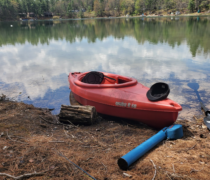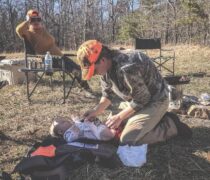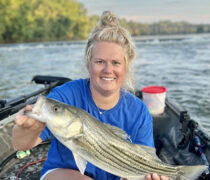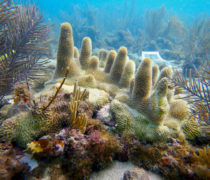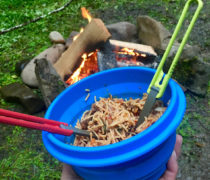The Hog Blog

By: Ashley Chance, Artemis Southeast Region Coordinator
What is a feral hog? Well, it’s a non-native animal that traces it’s origins back to domestic pigs, and to a lesser extent Eurasian boars. They are resourceful omnivores and prolific reproducers that can adapt to a wide variety of environments. This suite of skills in combination with human chauffeurs, has allowed them to become an incredibly destructive force both to agricultural producers and wildlife across the Southeast. Their range is expanding to new parts of the U.S. and this does not bode well for native wildlife species. Read on to learn more about the crisis and what your role could be in solving it.
Hog History
Feral swine first appeared in the Americas alongside early Europeans in the 1500’s. People weren’t big on containing livestock back then, and thus the hogs that could make a living on their own stopped returning home in the evenings. At this stage, feral swine weren’t a big problem, but with a little more human intervention they got a leg up. In the 1900’s Eurasian, or Russian, wild boars were introduced to parts of the U.S. for sport hunting and contributed to the feral hog gene pool.
Feral hog occurrence in the U.S. didn’t begin to change drastically until the 1980s. American sportswomen and men know that a hunted species is one that will persist. This is largely due to the way that wildlife management and conservation is funded in the United States. Hunters pay for licenses each season as well as taxes on firearms and ammunition, and these dollars get allocated to states to manage wildlife. Unfortunately, feral hogs were classified as a game species in some states from 1979-2011. The protections this afforded hogs in combination with additional releases and the popularization of “boar hunting” caused widespread expansion. The USDA has a great webpage detailing their march across the landscape, below are two of the maps from that page showing feral hog expansion:


If you think coyotes are like free-wheeling banditos, you could consider feral hogs as mob bosses. The destruction they are currently performing and have the capacity to perform, is almost unimaginable.
Here are some quick stats for you:
- 1.5 Billion dollars per year is spent on damage and control in the U.S.
- Their rooting and wallowing, behavior can create 16 inch deep furrows!
- They degrade water quality and carry a host of diseases and parasites
- Known to transmit e-coli, trichinosis and brucellosis (among others)
- Have direct impacts on native wildlife through predation
- Destroy upland bird nests including quail and prairie chickens
- They eat white-tailed deer fawns
- They become sexually mature at 6-8 months old
- They can breed year-round and have 2 litters of 4-12 piglets per year
- Populations have the potential to double in size in 4 months
- Feral hogs have been reported in at least 35 states
- Their population is estimated at over 6 million and growing
Why don’t we just get rid of them?

The thing about hogs is, they’re smart. They live in family groups called sounders and if you only catch part of the sounder in a trap, the remaining individuals will not forget the incident. The afore-mentioned fecundity issue means that unless a really concentrated effort is undertaken in a localized area it’s hard to stay ahead of population growth. Additionally, the eradication of large carnivores across the southeast and other parts the current feral hog range, mean that there aren’t many animals out there to keep populations in check.
A lot of research has gone into poisoning hogs, with sodium nitrite being the best current option. Utilizing poison for the control of wildlife species is always tricky because of the potential for impacts to non-target species. In a perfect world, we wouldn’t have feral swine and the need for pursuing methods like this wouldn’t exist.
The fact is, with the amount of money and energy that is put towards hog management currently, they could be eradicated. People are the wrench in this plan. Hog hunting outfitters (here I use the term outfitters to describe people making money off of hog hunting) and hog hunting enthusiasts are ensuring that feral pigs continue to be moved around to new locations and that the current population continues to be supplemented through illegal releases.
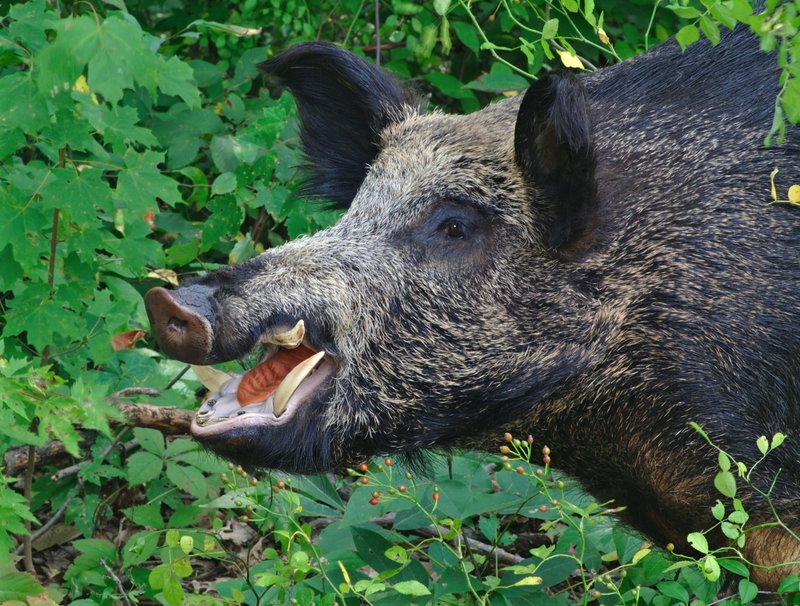
What can you do?
Put simply: don’t relocate them and don’t hunt them. Not hunting them seems counter-intuitive on the surface, and I don’t mean that if you’re in the field and see one you shouldn’t shoot it. What I do mean is that we shouldn’t try to popularize hunting feral hogs or glamorize their harvest because this will ensure the continuation of them on the landscape. Many states no longer have seasons for hogs, they simply say you can harvest a hog anywhere anytime that you are legally hunting another species. For example, if you’re out deer hunting or coyote hunting and see a pig, or 30 pigs for that matter, you can shoot them with the firearm or bow that you are using to legally pursue another species. Some states adopted this policy after research indicated specific seasons on hogs encouraged the pursuit of them and would perpetuate their existence on the landscape.
Talk about the damage they cause and discourage others from transporting them. Don’t underestimate the impact of sharing your ethic with fellow hunters. People mostly behave based on norms, and normalizing that feral swine are an exotic invasive species that degrades the resource we all cherish could go a long way in eliminating them.
Don’t feed wildlife. This is an entirely different blog post, but suffice to say that feed or bait intended for other species can easily be exploited by hogs and can serve as focal areas for disease transmission.
Report damage and sightings to your state wildlife agency. If you are really ambitious, or angry enough, you can trap hogs yourself on your own property. However, the traps are expensive and require intensive monitoring to work so this is not something that private citizens often pursue.
The USDA has a great website on feral hogs that includes identification guidelines for pigs themselves (don’t confuse them with the Southwest’s native peccaries!) and their sign.
www.aphis.usda.gov/aphis/ourfocus/wildlifedamage/operational-activities/feral-swine

